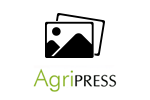|
|
| 07 jul 2013 |
16:59 |

|
John Deere Adds Array of Environmental Sensors to Field Connect
Water management system senses environmental factors plus soil moisture
The sensors available on the Field Connect system provide data on temperature, wind speed, wind direction, humidity, solar radiation, leaf wetness and rainfall.
|
|
Expanding on the John Deere Field Connect soil moisture monitoring system introduced last fall, John Deere will add new environmental sensors and features this spring to provide additional information to producers of all types of agricultural crops.
The new environmental sensors include: Weather Station, Rain Gauge, Temperature Sensor, Pyranometer, and Leaf Wetness Sensor.
In addition to the soil moisture data provided by the Field Connect system, the new sensors provide data on temperature, wind speed, wind direction, humidity, solar radiation, leaf wetness and rainfall. The sensors are installed in customer fields as part of the Field Connect Gateway.
Nicholas Shafer, product manager for the John Deere Intelligent Solutions Group, says the new environmental sensors, along with the multiple capacitance soil moisture sensors, give customers a more comprehensive and accurate picture of what's going on in their fields.
"With this detailed site-specific information, producers are able to more efficiently utilize water resources, as well as schedule and perform other agronomic practices dependant on soil and environmental conditions," Shafer explains. "This results in more efficient use of inputs, fuel and labor saving and additional yield potential from the crop."
Field-specific soil moisture and environmental data is transmitted to a secure website for viewing, and customers can program the system to receive alerts based on set parameters. Field Connect charts the data from the readings over time, allowing producers to identify trends. The system can be customized to each field depending on the objectives of each customer to more effectively optimize the productivity of each field.
"These sensors provide key information to producers, helping them to make better agronomic decisions that will pay off with higher yields at harvest," Shafer says.

|
|
|
|
